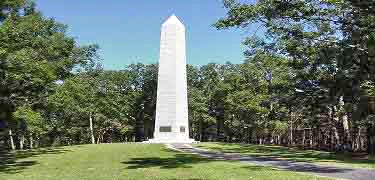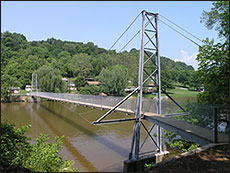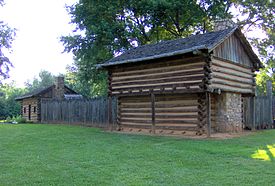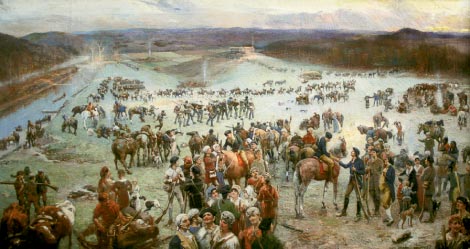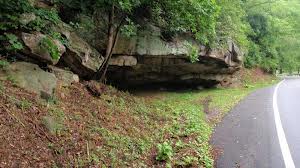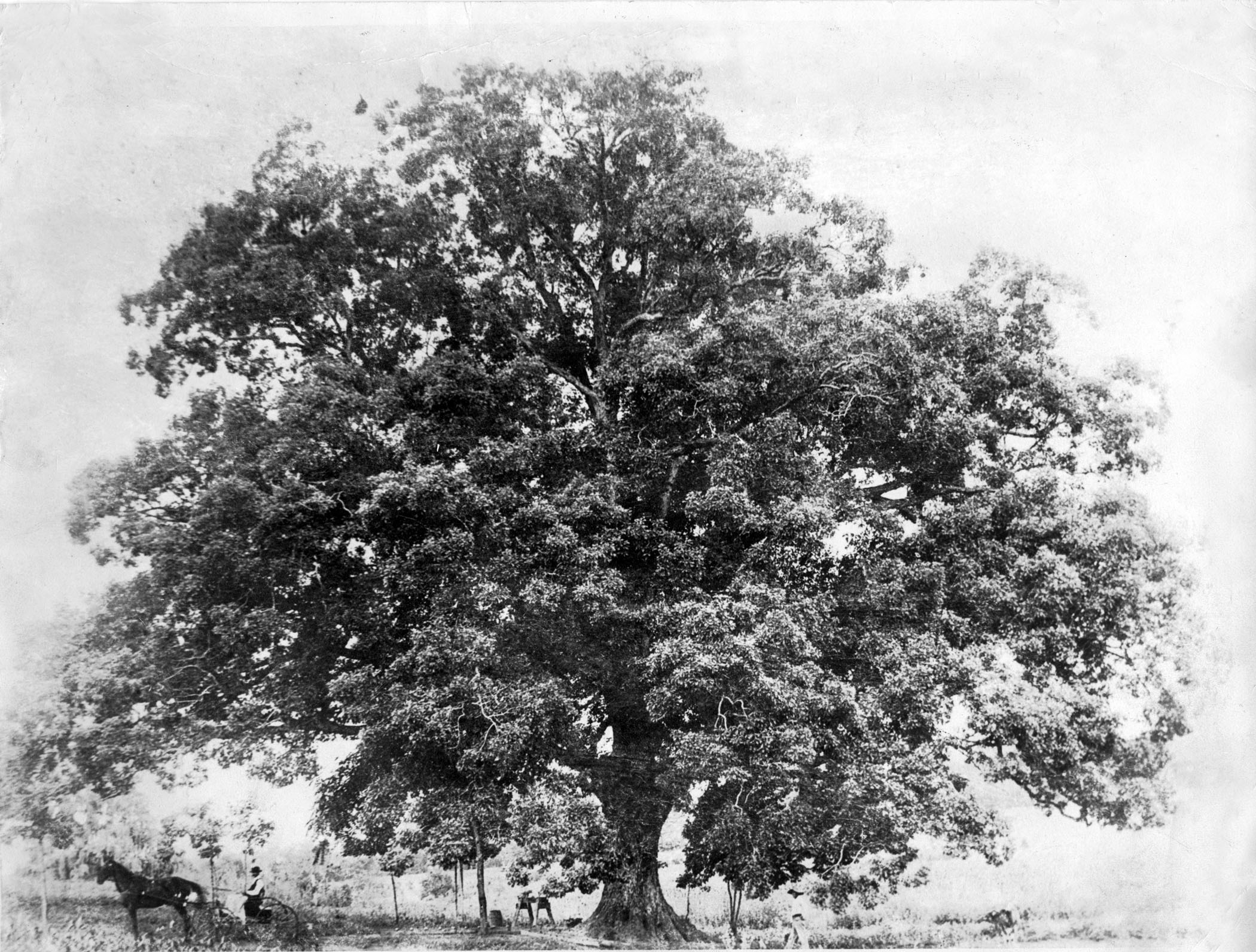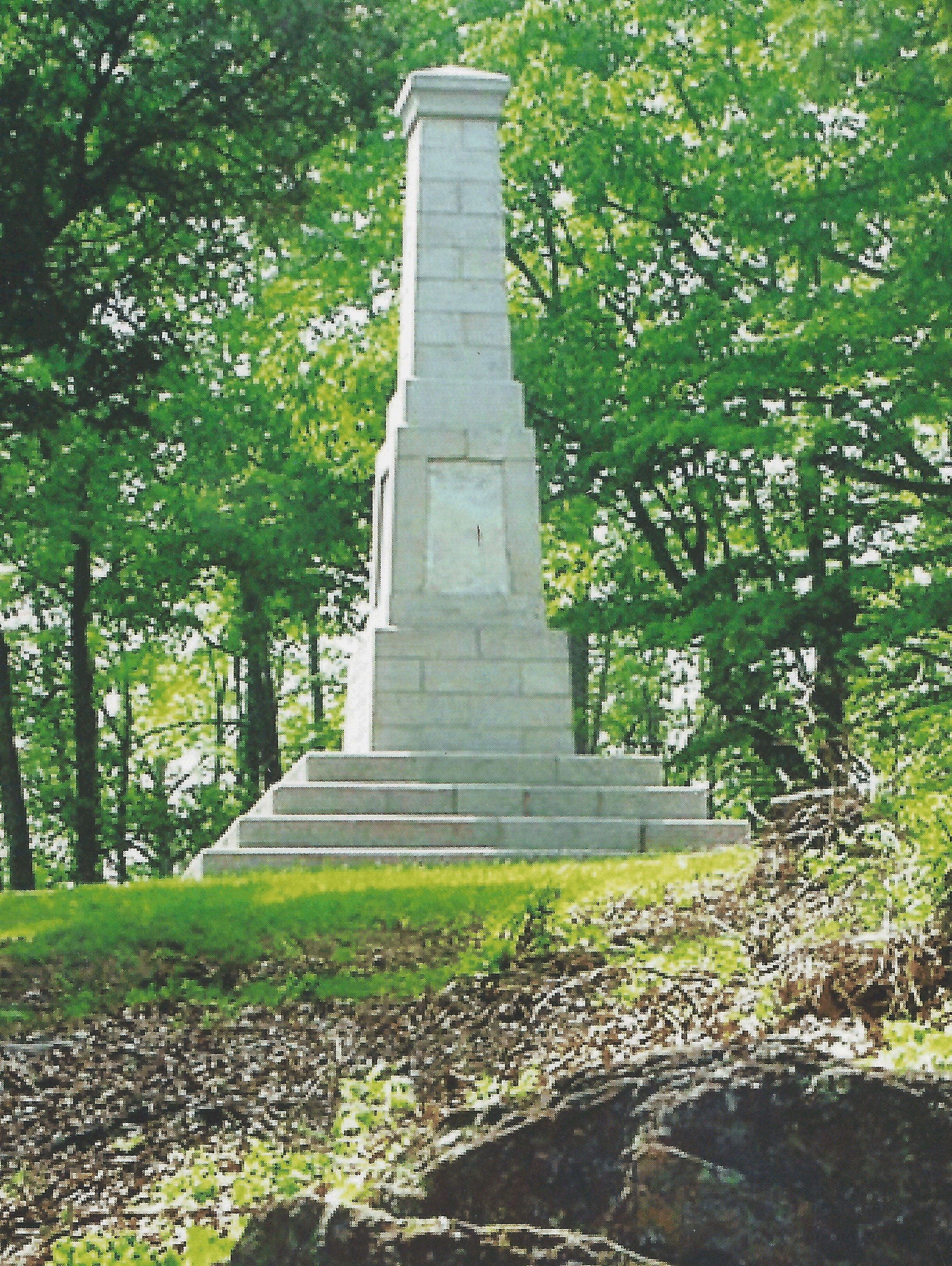Quaker Meadows
Burke County, North Carolina
Quaker Meadows Marker
On Friday evening 15Sep1780, Patrick Ferguson prepared his forces to surprise Colonel Charles McDowell at his Quaker Meadows home. Early Saturday morning, Mrs. McDowell told them that he had left (14Sep) and she did not know where he had gone. The patriots had been scattered from the 12Sep battle on Cane Creek. Loyalist militia officer Andrew Chesney described chasing McDowell’s Whig militia into coves and caves. In his journal, Chesney stated that he captured the Burke County records and sent them to his father’s house. He said that NC men were fast joining the Tory militia.
Ferguson’s professional soldier, Lt. Anthony Allaire, recorded that on Saturday afternoon 16Sep, his men ranged on up the Catawba valley to Pleasant Garden and Cathey’s fort. Then on Sunday, they went on up to Davidson’s (Old Fort NC).
An express from Watauga to Colonel Benjamin Cleveland named 30Sep for a rendezvous at Quaker Meadows because of Ferguson’s threat and his last known location at Colonel McDowell’s home.
On Saturday 30Sep1780, the split over-mountain volunteers rejoined at Council Oak (Morganton NC). Colonel Benjamin Cleveland’s Wilkes and Surry militia corps and some stray Burke County militia joined the Watauga expedition. There are multiple accounts. Some say that the muster was at the homes of Charles and Joseph McDowell. The majority of accounts show Council Oak as the meeting place for 1500 soldiers. That places the Catawba River at Greenlee’s Ford between the patriots and the last reported locations of both Ferguson’s regiment and other Red Coat units in South Carolina.
Marking the locations of the Burke County patriots’ homes requires some guessing. First, many of the men were land barons with multiple tracts acquired and traded over the years. The earliest land claim is the best guess for 1780 residence. Second, many land records were lost in the courthouse fire of April 1865. Third, the accuracy of a survey record is subject to crude equipment, magnetic declination, writing in the field, transcription of notes and computations into a surveyor’s record, and transcription to a deed with the opportunity for error at each point. Fourth, the recorded land on 01Oct1780 did not include settlers prior to that day whose surveys were not yet accomplished and written in the county’s books. The placement of markers on the map comes with no warranty.
Quaker Meadows map.On the return trip from Kings Mountain several wounded patriots were spread among Quaker Meadows farm houses where Dr. Dobson made the rounds to treat them. Some of Cleveland’s corps stayed at the Charles and Margaret O’Neill McDowell home. John Bowman was killed at Ramsour’s Mill, but Grizzee Bowman kept some wounded patriots at their house. The John Mackey’s kept Minor Smith and three Lewis brothers. William Lowe stayed with William Hannah as a nurse until Hannah died. Minor Smith had not yet recovered, so Lowe returned to Surry County under Captain Joel Lewis. Probably Joseph McDowell and Dr. Dobson kept some. George Wilfong kept Dr Dobson’s wounded son, Joseph Dobson Jr., until Dobson could ride, then loaned him a horse. The Greenlee’s (and perhaps the McDowell’s) went to college with Robt Edmondson, Samuel Newell, David Campbell, and William Campbell. Washington & Lee University lists Samuel Greenlee in their alumni. James Greenlee, Joseph McDowell, and Charles McDowell are reported to be educated in Virginia, but are not listed with the graduates. Their Burke County houses were likely infirmaries for BKM wounded.
Lyman Draper wrote of a Samuel Newell letter stating that some of the wounded stayed 8 or 10 miles above Burke Court House which was above Hunting Creek at current US64-US70 junction. Newell meant “8 or 10 miles upstream”, not north. The wounded went toward Marion without crossing the rain swollen Catawba. It would be far enough from the threat of Tarleton’s dragoons, but not the extra risk and discomfort for wounded soldiers of another river crossing.
Quaker Meadows 13Oct1780– The Kings Mountain expedition crossed the Catawba and split up. Some Burke County troops stayed in the area. The Wilkes/Surry Corps and some other patriots headed toward the Moravian Towns with the prisoners. Some over mountain troops headed back across the Blue Ridge toward the Watauga and the Holston.
Quaker Meadows 16Oct1780– When word reached Rachel Biecknell in Wilkes County, that her husband Thomas was wounded, she rushed to help Dr. Dobson care for him and the others. Five Biecknell children were left behind for eleven weeks when Thomas died. Rachel went back home to Wilkes County and in a few weeks Mary Biecknell, their sixth, was born.
Mount Kitsuma map.When you get to NPS page, click the “View Park Map” button.
NPS Overmountain Trail
Council Oak lasted for centuries before it died. The Burke County folks planted a sapling to keep the tradition alive with Council Oak Junior. Burke County has centuries of tradition in its contributions to independence and liberty. Some myths and errors of fact have crept into the record of Burke County’s patriots. Though inconsequential in the big picture, an inaccuracy could be quite large to the family of an individual. This project can refine each acorn until its facts are as powerful as was Council Oak.
Inherent difficulty in accurate accounts is the conflicting characterizations of people and locations. On Buffalo Marsh Run in Frederick County, VA, Grandma Logan and Joseph Black knew Benji Logan. On Beaver Creek in Washington County, the boy was known as Benjamin Logan, a Kentucky explorer. At St. Asaph in Lincoln County, Kentucky, the man was revered as Colonel Logan of Logan’s Fort. David Vance and John Watson spoke of their Colonels as John Sevier and William Campbell when they retreated to the Watauga. At Kings Mountain they spoke of fighting under Colonel McDowell meaning Major Joseph. In their hearts, Charles McDowell was their colonel with many Burke County experiences. Captains Neal and Herndon were the commanders of many militia men at Kings Mountain though both of those patriot captains were at Cowpens, not Kings Mountain, commanding the larger force with their tired horses and aching feet, anxiously waiting to guard prisoners after the patriot victory.
Apparently conflicting accounts of people and places may well be both precisely correct, but different in the terminology of different times and circumstances.

